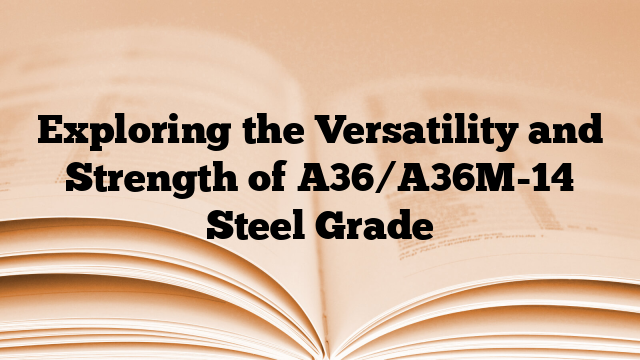Exploring the Versatility and Strength of A36/A36M-14 Steel Grade: A Chemical Composition Analysis
The A36/A36M-14 steel grade is commonly used in various industries due to its versatility and strength. Its chemical composition plays a crucial role in determining its properties and performance in different applications.
The chemical composition of A36/A36M-14 steel grade primarily consists of iron (Fe), carbon (C), manganese (Mn), phosphorus (P), sulfur (S), silicon (Si), and copper (Cu). The permissible chemical composition limits for this grade are specified in the ASTM A36/A36M standard.
Iron (Fe) is the main component, giving the steel its inherent strength and toughness. Carbon (C) content determines the steel’s hardness and strength, with higher carbon content resulting in increased hardness. The carbon content in A36/A36M-14 is typically limited to a maximum of 0.26%.
Manganese (Mn) is added to enhance the steel’s strength and ductility. It also contributes to the formation of a fine-grained ferrite structure, improving the steel’s toughness. The manganese content typically ranges from 0.60% to 0.90%.
Phosphorus (P) and sulfur (S) are impurities that can affect the steel’s mechanical properties. Phosphorus is typically limited to a maximum of 0.04%, while sulfur is limited to a maximum of 0.05%. Keeping these impurities within the specified limits helps maintain the desired mechanical properties, such as toughness and weldability.
Silicon (Si) is added to improve the steel’s strength and corrosion resistance. It also helps enhance the steel’s ability to be hot worked or formed. The silicon content in A36/A36M-14 is typically limited to a maximum of 0.40%.
Copper (Cu) is sometimes added in small amounts to improve the steel’s atmospheric corrosion resistance. It forms a protective oxide layer on the surface, preventing further oxidation and corrosion. The copper content in A36/A36M-14 is generally limited to a maximum of 0.20%.
Overall, the chemical composition of A36/A36M-14 steel grade is carefully controlled to ensure the desired mechanical properties, such as strength, toughness, and weldability. The precise composition allows for its wide range of applications across various industries, including construction, manufacturing, and transportation.

